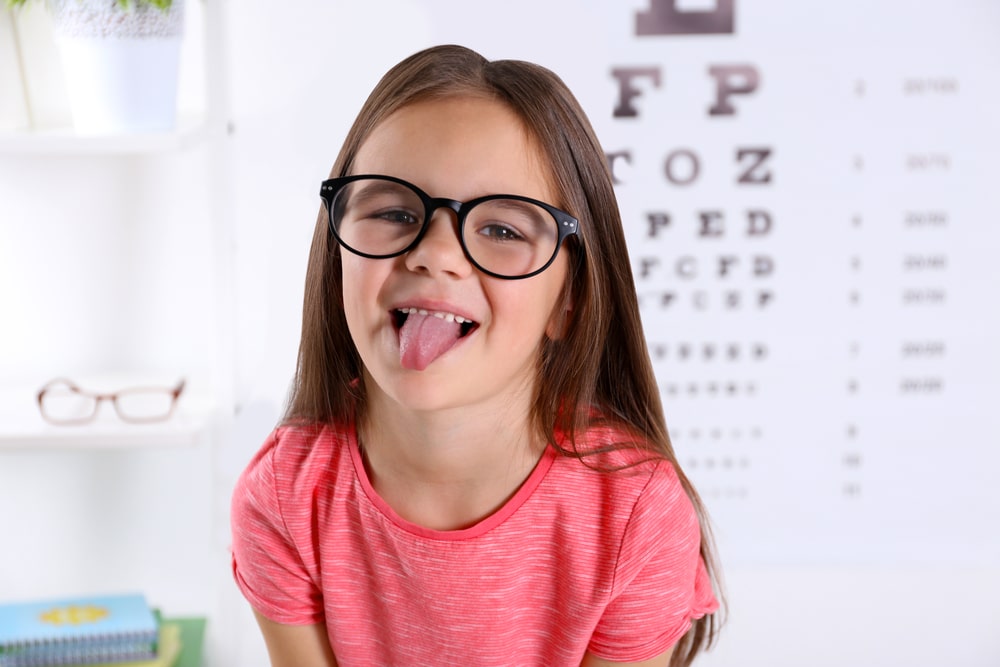
Your growing children have many healthcare needs. So many, in fact, that it can be easy to miss some important checkups and milestones. All too often, parents delay taking their children to the eye doctor, only recognizing they need vision correction because of problems at school or issues like headaches. But you can help your child learn better and prevent long-term vision problems by taking them to the optometrist early and according to a routine. So, how often should your child have eye exams?
Why Eye Exams Are So Important for Kids
As one of the most important ways to ensure your child’s eyes are healthy, it is critical that your child have eye exams. Of course, these checkups are also the only sure method of finding and evaluating vision problems. Through a routine eye exam, your child’s eye doctor can determine whether they need glasses or contact lenses to see clearly. They also find signs of eye health conditions early, before they lead to bigger problems.
How Vision Problems Affect Your Child
With uncorrected vision problems, your child suffers frustration in school. They struggle to see at various distances, impacting their ability to learn. Unchecked vision can also put their safety at risk.
If your child’s eyes are not developing properly, you may not see signs of these issues until they have an eye exam. That is, if signs are visible at all. Their eyes may not be working well together or clearly focusing on the people and things around them. This can make kids feel isolated and unsure of themselves. It can lead to problems with socialization, self-confidence, personality development and physical activities, not just math, spelling and reading.
An eye screening by a school nurse is no substitute for a thorough eye exam performed by your child’s eye doctor. While a screening at school can find obvious problems or even detect some vision issues, only an eye doctor can fully assess your child’s eyes. The optometrist or ophthalmologist is also the only one who can provide accurate diagnosis and the best treatments for eye conditions. This is why it is so important that your children have eye exams on a routine basis.
Signs That Your Child Has Vision Problems
Along with the question about how often should a child have eye exams is one of signs pointing to vision problems. But these signs are not always clear. They are most visible when a child was born prematurely, but otherwise can be invisible.
Some signs include your child blinking very frequently on an ongoing basis. Or they may rub their eyes often. Another possible indication of vision problems is delayed motor skill development in a toddler. If your child has problems with eye tracking, they may not make eye contact often. Of course, failing eye screenings at their pediatrician’s office or school is another indication.
Many times, parents see no signs of their child’s vision problems. Again, this is why it is so important that a child have eye exams on a regular basis.
Eye Conditions and Vision Problems Your Child’s Eye Doctor Looks For
When children have eye exams, the optometrist is looking for signs and symptoms of various conditions. These include:
Amblyopia, also called “lazy eye”
Strabismus, eyes pointing in different directions
Ptosis, a drooping eyelid
Myopia, nearsightedness
In an eye exam, your child’s eye doctor checks their visual acuity, his or her ability to see shapes and details clearly. If they cannot see clearly, they may need vision correction such as by wearing glasses. Your optometrist or ophthalmologist provides a prescription for glasses when needed.
When should your child have eye exams?
Let’s answer that big question of when should your child have eye exams. They should usually follow the schedule below:
6 months – first comprehensive eye exam
3 years – second comprehensive eye exam
6 years – first grade eye exam
Every 1 to 2 years after age six – routine eye exams
Of course, if there are signs of vision problems or eye health conditions, your child’s eye doctor may recommend a different schedule by which your child have eye exams.
Schedule Your Child’s Eye Exam Today
There is no time like the present to ensure you and your child have eye exams as you should. Even if you have skipped multiple visits, you can get back on track. Simply call your nearest Clarity Vision Eye Care Center in southeastern Virginia or eastern North Carolina.
Clarity Vision locations include:
- Smithfield, NC
- Clayton, NC
- Holly Springs, NC
- Williamston, NC
- Apex, NC
- Suffolk, VA
Schedule your child’s eye exam today.
















